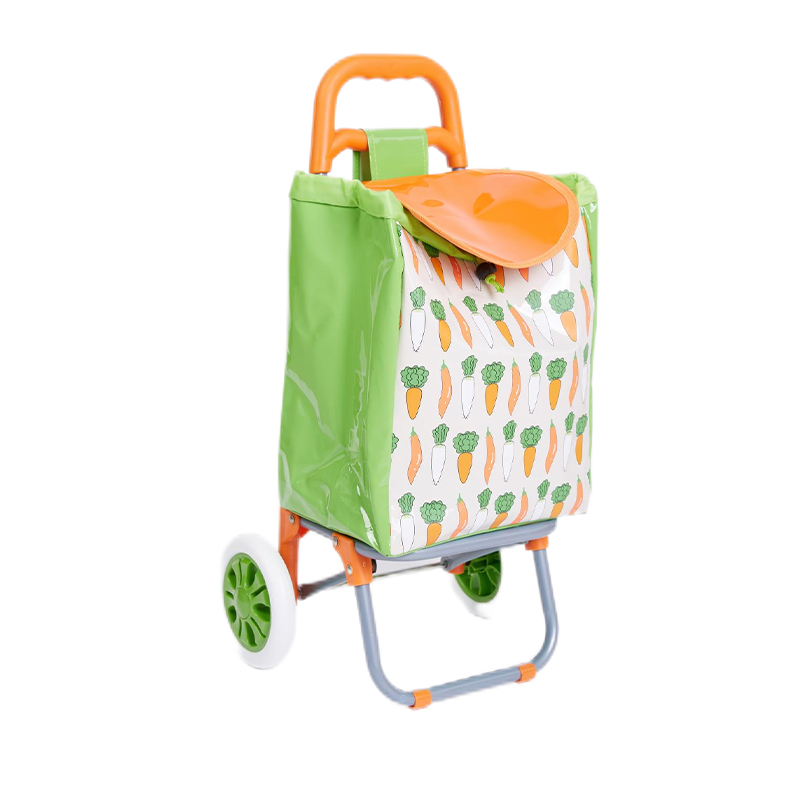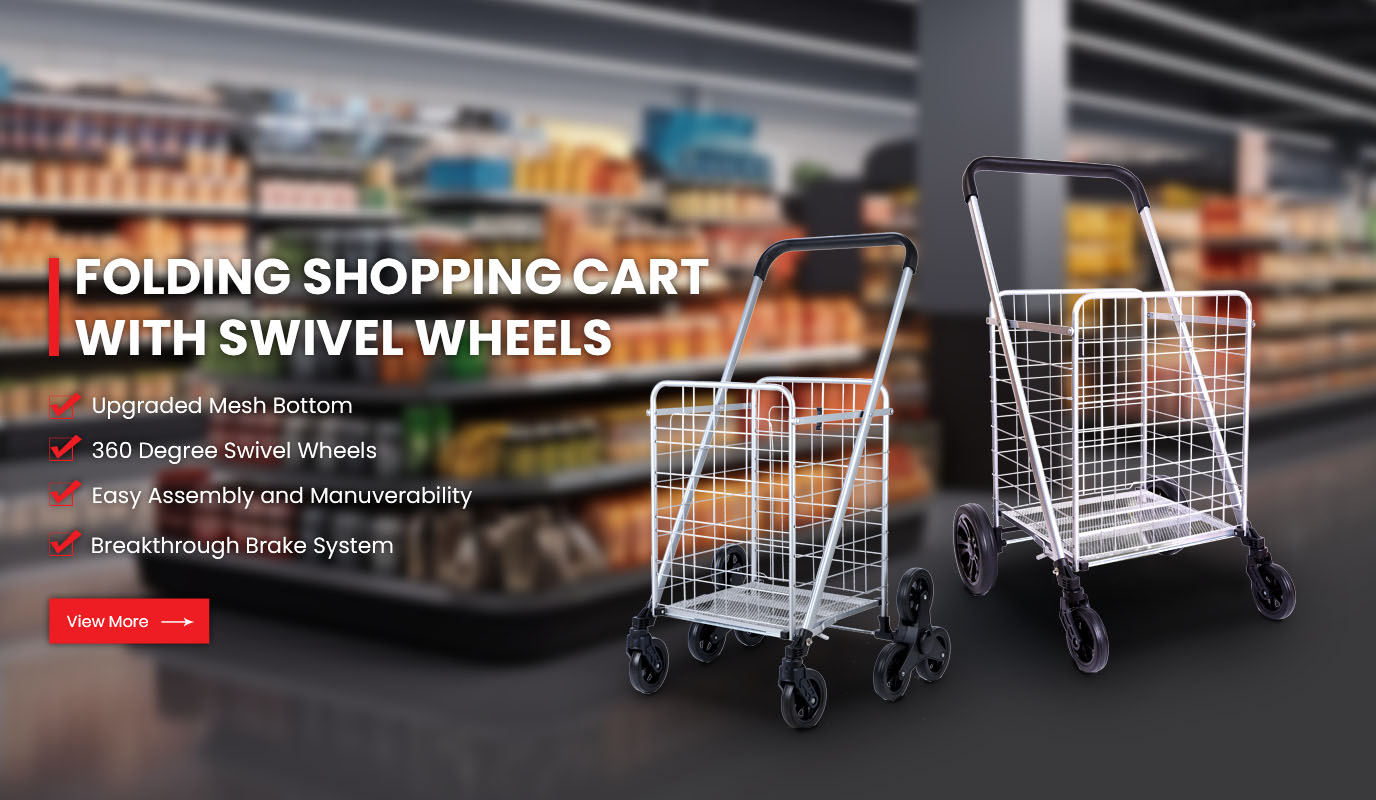Carbon Footprint Certification Practice Of Recyclable Eva Shopping Cart under The Goal Of Carbon Neutrality
Carbon neutrality and carbon footprint certification: from concept to action
The carbon neutrality goal requires companies to achieve "net zero" carbon emissions throughout the product life cycle, and carbon footprint certification is the tool to quantify this goal. According to the ISO 14067 standard, carbon footprint certification covers greenhouse gas emissions at all stages of raw material acquisition, production, transportation, use and waste treatment. As a leader in global climate action, the European Union has passed the European Green New Deal and the Carbon Border Adjustment Mechanism, requiring imported goods to provide carbon footprint reports, otherwise they will face tariff penalties. For high-circulation products such as Lightweight Shopping Trolleys, carbon footprint certification is not only an environmental responsibility, but also a rigid need to break through trade barriers.
Technical innovation of recyclable EVA Shopping Carts
1. EVA material: balance between environmental protection and performance
Recyclability: EVA can be recycled at least 5 times through hot melt regeneration technology, and the carbon emissions during the recycling process are reduced by 60% compared with virgin plastics.
Lightweight: Density 0.93g/cm³, 30% lighter than PVC, meeting the portable needs of lightweight shopping trolleys.
Durability: Low temperature resistance and impact resistance, adapting to the severe cold in Northern Europe and tropical humid climate.
2. Design breakthrough of lightweight shopping trolleys
Structural optimization: Adopting honeycomb frame design, the weight is only 3.2kg when bearing 50kg, which is 70% lighter than traditional steel frame trolleys.
Modular assembly: Quick-detachable wheels and folding body reduce logistics volume and increase the loading capacity of a single container by 120%.

EU regulations: Hard threshold for carbon footprint certification
1. Carbon border adjustment mechanism
Starting in 2026, the EU will impose carbon tariffs on imported plastic products, and the tax rate will be calculated based on the carbon footprint of the product. Taking lightweight shopping trolley as an example, if its carbon footprint is higher than the average of similar products in the EU, the excess will be taxed at 90 euros per ton.
2. Eco-design directive
The new regulations that will take effect in 2025 require that recycled materials account for ≥35% of plastic products and must pass EPD certification. EVA material can meet the recycled material ratio requirements due to its easy recycling characteristics, and EPD certification can reduce the carbon footprint calculation error by 30%.
Carbon footprint certification practice: from theory to implementation
1. Four-step certification process
Boundary definition: Determine the full life cycle range from EVA particle production to shopping cart disposal.
Data collection: Monitor carbon emissions in key links, such as EVA production energy consumption and injection molding power consumption.
Calculation and analysis: Using LCA software modeling, the carbon footprint of a single cart is 6.3kg CO₂.
Third-party verification: TÜV or SGS verifies the authenticity of the data and issues an ISO 14067 certificate.
2. Practical case: from factory to shelf
Recycled EVA application: Using 30% recycled EVA particles, the carbon footprint of a single cart is reduced to 5.1kg CO₂.
Green electricity substitution: The factory rooftop photovoltaic system covers 50% of electricity consumption, reducing carbon emissions by 120 tons per year.
Logistics optimization: Biofuels are used for sea transportation, and carbon emissions are 20% lower than traditional fuel.
Results: After passing the certification, the product was allowed to enter the EU REACH white list, and the order volume increased by 45%.
The value of carbon footprint certification: enterprises, industries and the future
1. Reconstruction of corporate competitiveness
Market access: Carbon footprint certification is a mandatory threshold for entering European retail giants such as Lidl and Aldi.
Premium ability: The price of certified products increased by 8%-12%, and the profit margin increased by 3.5%.
2. Acceleration of industry green transformation
Technical standardization: EVA regeneration process promotes the industry to establish a unified recycling system and reduce the cost of recycled materials.
Supply chain collaboration: Force upstream chemical companies to provide low-carbon EVA particles to form a closed loop of green industrial chain.
3. Future trends: From carbon reduction to circular economy
Closed-loop recycling: Establish a "production-consumption-recycling" closed loop, and the EVA shopping cart will be repurchased and recycled by the manufacturer after it is abandoned.
Digital carbon ledger: Blockchain technology tracks carbon footprints and generates verifiable carbon emission reports in real time.
The carbon footprint certification practice of recyclable EVA shopping carts is not only a compliance strategy for companies to deal with EU regulations, but also a core path to promote the industry to move towards the goal of carbon neutrality. The combination of lightweight design and circular economy model not only reduces carbon emissions, but also reshapes the competition rules of the global supply chain. In the future, whoever can lead in carbon footprint transparency and technological innovation will be able to occupy the commanding heights in the era of green trade.



